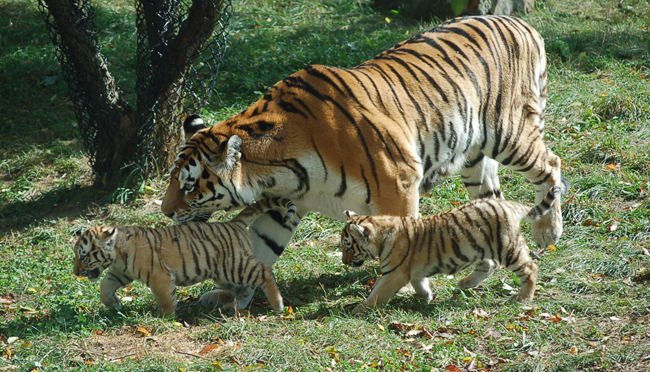Siberian Tiger Population Declines

The last remaining population of Siberian tigers has likely declined significantly due to increased poaching and habitat loss, according to a report released yesterday by the Siberian Tiger Monitoring Program, a collaboration between the U.S. Wildlife Conservation Society (WCS) and several Russian organizations.
The results will help inform Russian officials figure out how to protect remaining populations of the world’s biggest cat, WCS officials say.
The report was based on a recent annual tiger survey conducted over a representative part of the tiger's range. Only 56 tigers were counted in the monitoring area, a 40 percent decline from the 12-year average.
Such annual tiger surveys, which are conducted at 16 monitoring sites scattered across the tiger's range, act as early warning systems to detect changes in the tiger population. The monitoring area, which covers 9,000 square miles ((23,555 square kilometers), represents 15percent to 18 percent of the existing tiger habitat in Russia.
While deep snows this past winter may have forced tigers to reduce the amount they traveled, making them less detectable, the report notes a four-year trend of decreasing numbers of tigers.
"The sobering results are a wake-up call that current conservation efforts are not going far enough to protect Siberian tigers," Dale Miquelle, of the WCS’s Russian Far East Program, said in a statement. "The good news is that we believe this trend can be reversed if immediate action is taken."
The authors of the report say the decline is due primarily to increased poaching of both tigers and their prey species in the region, coupled with a series of reforms in Russia, which reduced the number of enforcement personnel in key tiger areas.
Get the world’s most fascinating discoveries delivered straight to your inbox.
Russian scientists and officials at non-governmental organizations are recommending changes in law enforcement regulations, improvements in habitat protection, and a strengthening of the protected areas network to reverse the downward trend.
"While the results are indeed bad news in the short term, we believe the overall picture for Siberian tigers remains positive," Colin Poole, WCS director of Asia Programs, said in a statement. "There is an enormous amount of good will for saving Siberian tigers. We just need to translate this into action."
Indeed, the last half-century has brought some good news for this large cat. The total number of Siberian tigers across their entire range was estimated at approximately 500 individuals in 2005, having recovered from less than 30 animals in the late 1940s.
The Wildlife Conservation Society's work in this region was supported by 21st Century Tiger, E. Lisk Wyckoff, Jr. and the Homeland Foundation, and the Save the Tiger Fund, among others.
- Top 10 Species You Can Kiss Goodbye
- Image Gallery: The Word's Biggest Beats
- Tigers Vanish in Nepal

